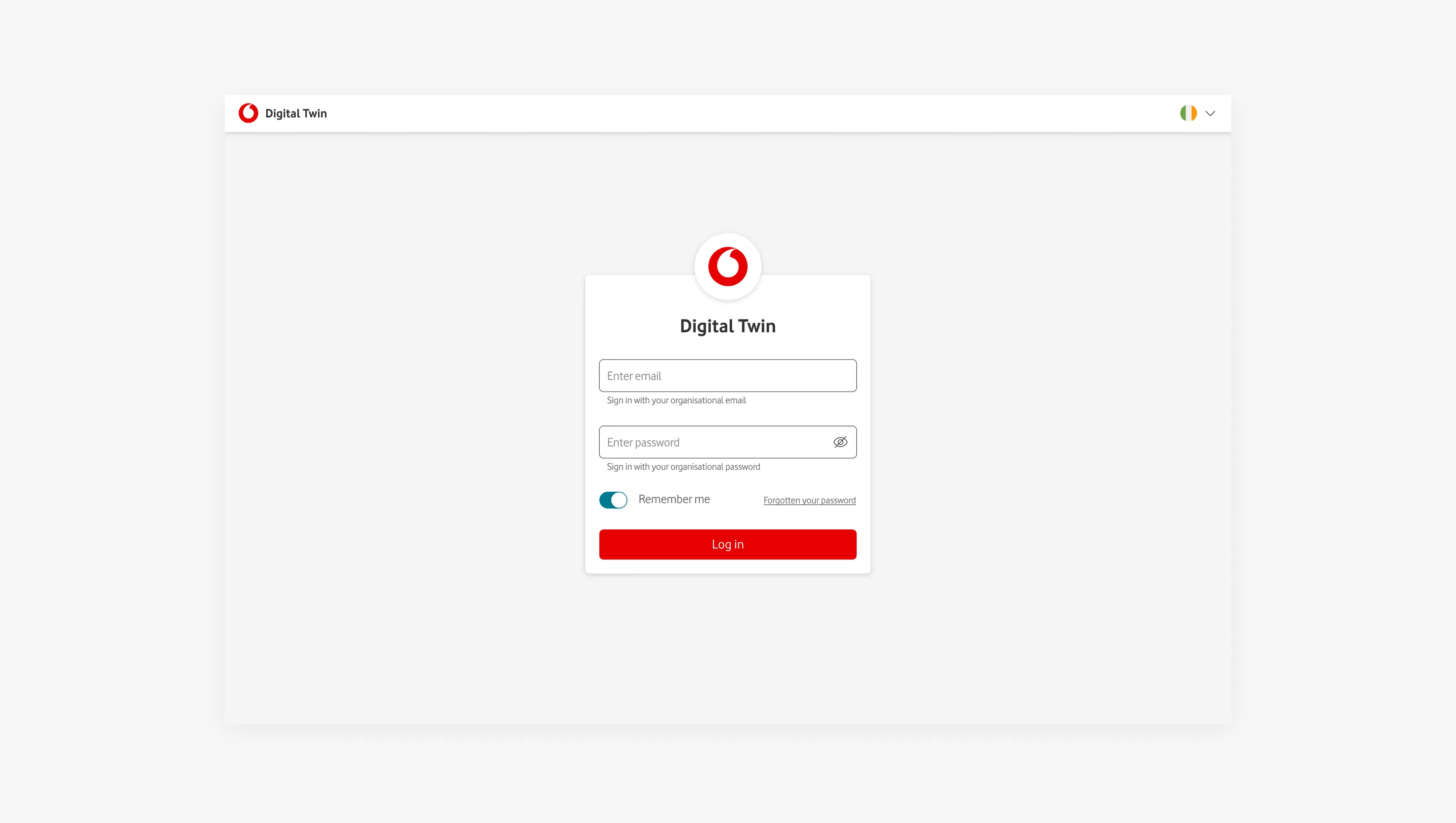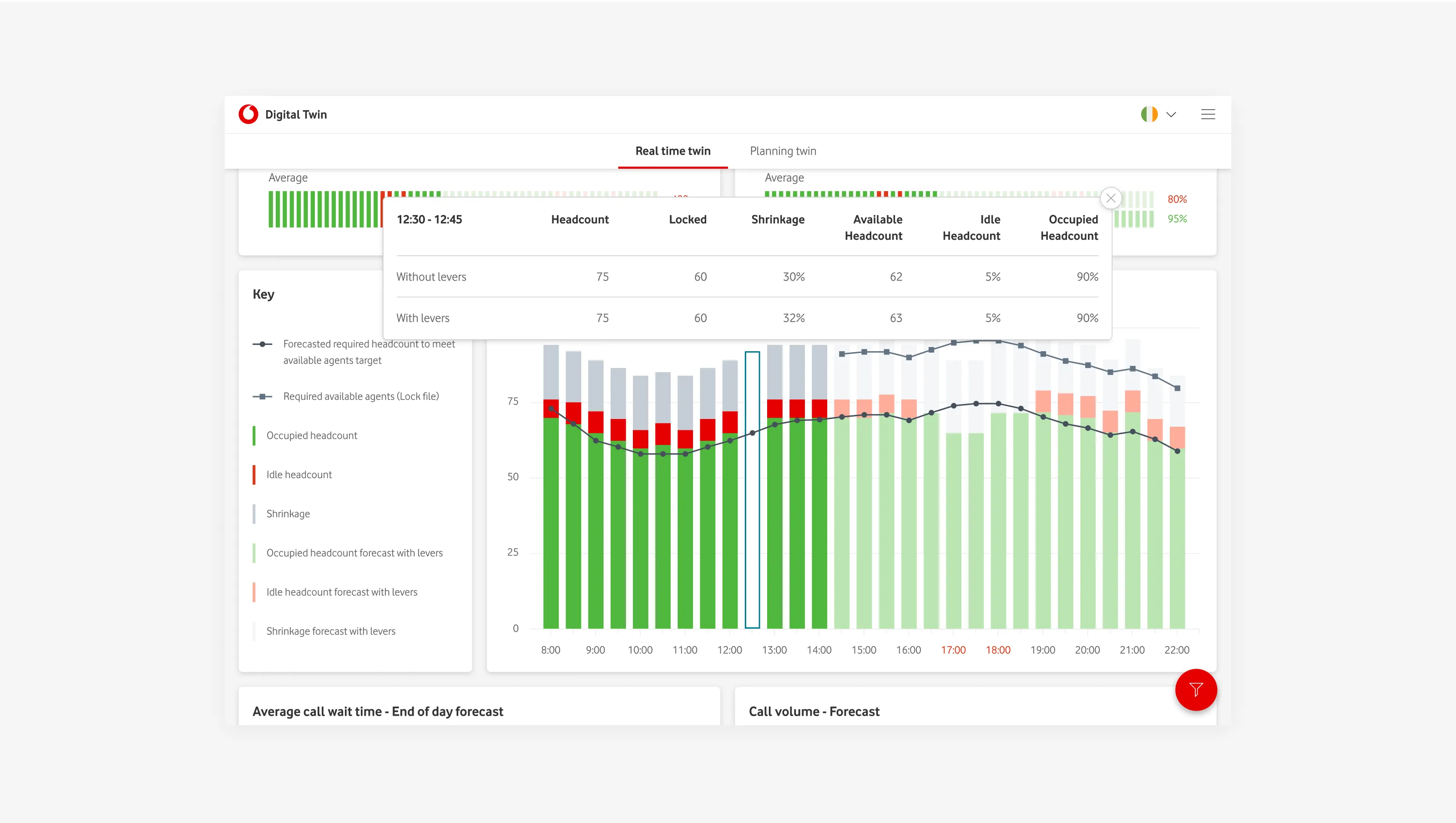Dashboard with immediate comparatives
Live KPIs presented as current vs target vs variance with trend indicators. So that managers can spot risk within seconds without drilling.
Scenario controls for forecasting
Lightweight controls (e.g. time window, agent reassignment, queue thresholds) that preview projected impact before applying. This supports “what-if” thinking and reduces costly trial-and-error on live queues.
Progressive disclosure for density
Overview surfaces critical signals; drill-downs reveal queue, skill, and agent-level details. This keeps the main canvas readable while preserving detail when needed.
Action proximity
Primary actions (re-assign, re-route, schedule) appear inline with the data they affect. This reduces context switching and speeds up time-to-action.
Design-system extensions
Added high-density table variants, status chips, and forecasting controls; codified tokens and states (idle, warning, breach). Because creating reusable patterns for data-heavy operations; improved consistency and build speed.
Accessibility & clarity
Colour-independent status cues (icons, labels), keyboard navigation, and readable data at enterprise densities. This ensures reliability and inclusivity in mission-critical contexts.






